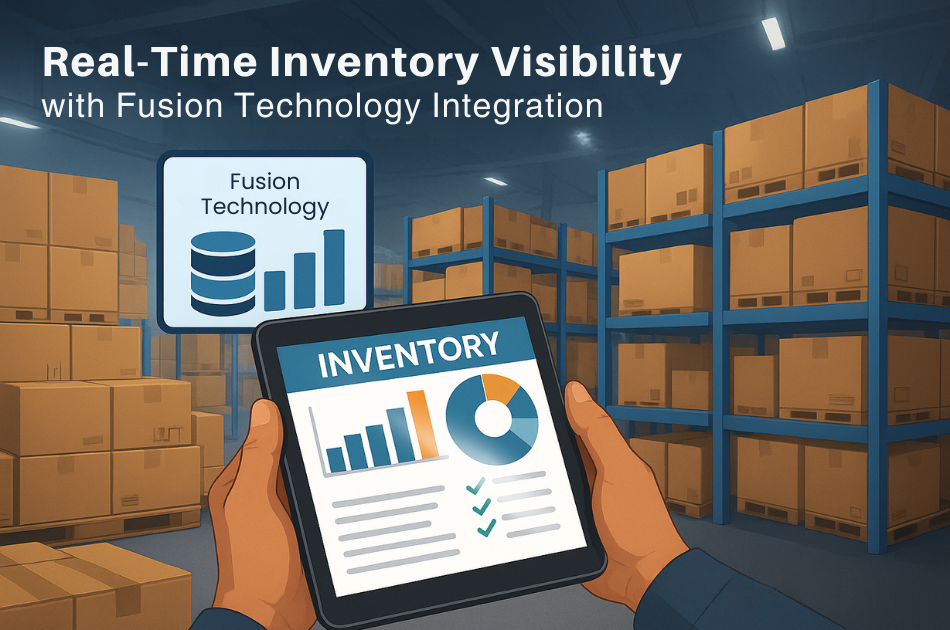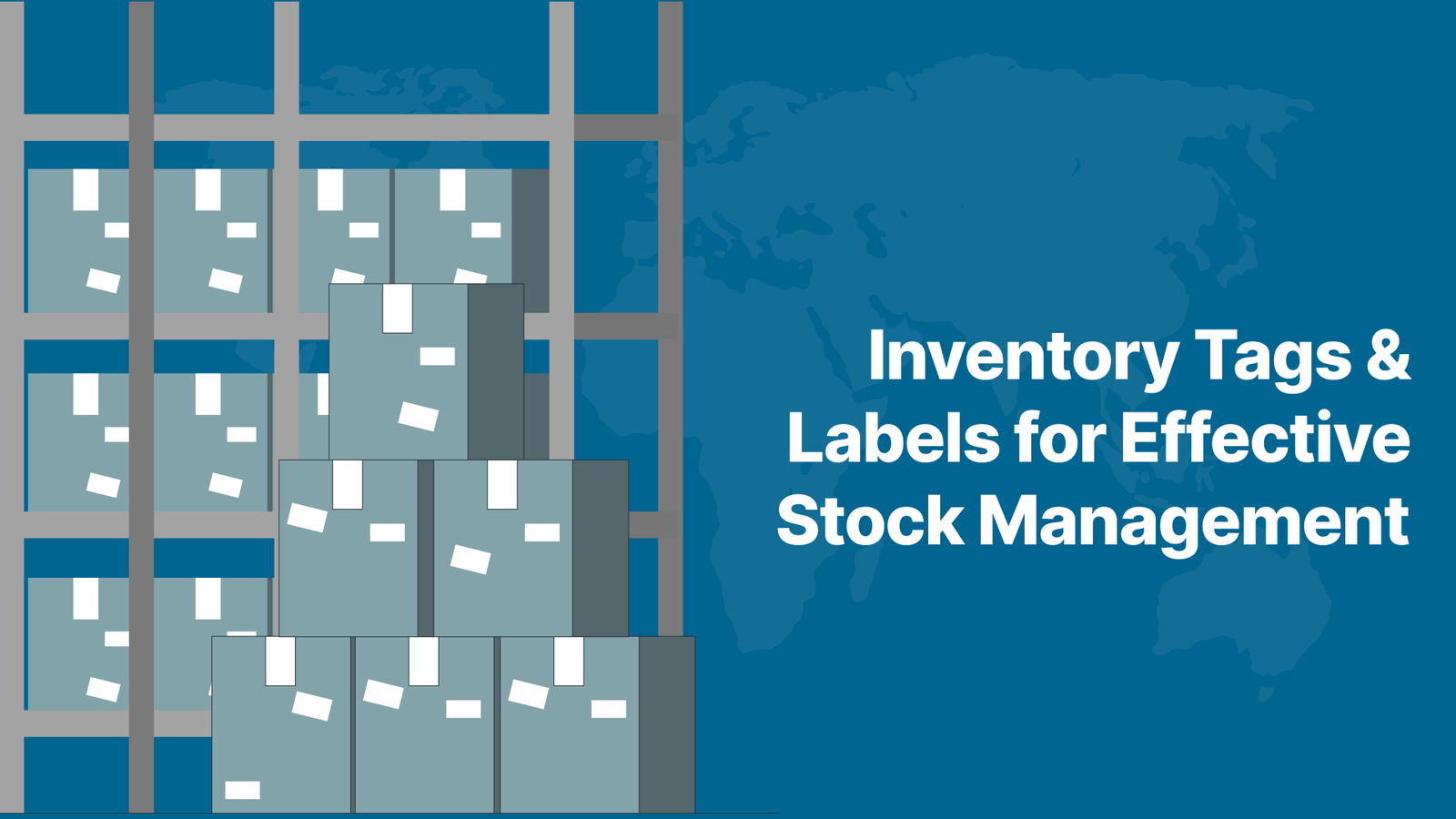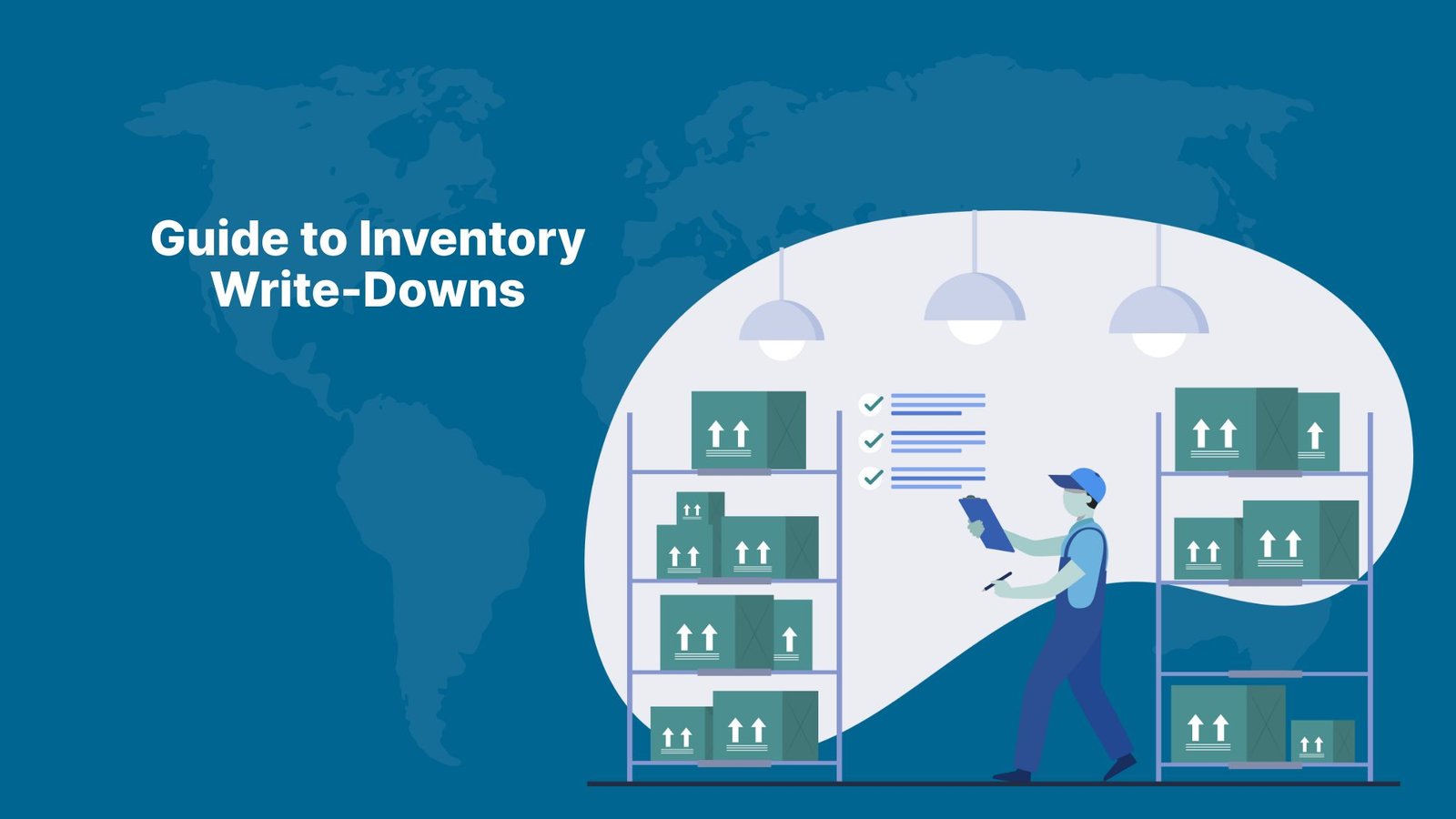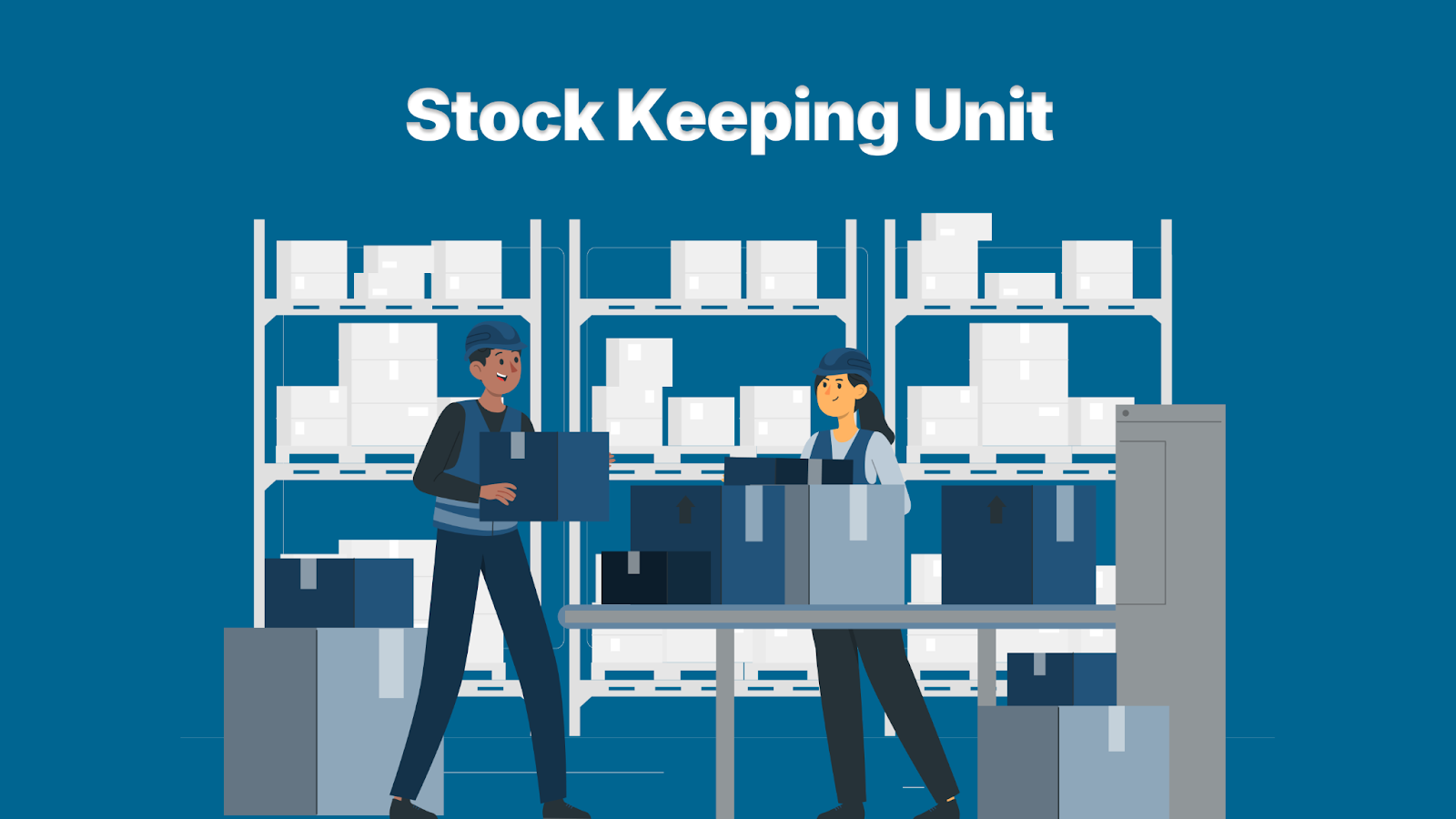Imagine launching a new product and seeing orders come in. But when it’s time to fulfill those orders, you realize your stock is either too low or sitting unused in a warehouse. This kind of inventory mismanagement can quickly turn a growing business into a frustrating challenge.
Merchandise inventory management is crucial for businesses looking to stay efficient and meet customer demand. It ensures that you have the right products at the right time, helping you avoid stockouts or overstocking items that don’t sell.
In fact, the global inventory management software market was valued at USD 2.31 billion in 2024, and it’s projected to reach USD 4.79 billion by 2032, growing at a 9.6% annual rate. As more businesses invest in these systems, the importance of efficiently tracking inventory is more apparent than ever.
In this guide, we will delve into the intricacies of merchandise inventory, its significance for your business, and strategies for optimizing your inventory processes to achieve success.
What is Merchandise Inventory?
Merchandise inventory refers to the goods that a business holds for resale. It includes all products that are ready for sale in their original condition and are typically stored until sold to customers. For retailers and e-commerce businesses, managing merchandise inventory is crucial because it represents a significant portion of their assets and directly impacts their revenue.
Essentially, it’s the stock of products available for customers to purchase, whether in a physical store or online platform. Now, let’s examine how managing your merchandise inventory not only affects your daily operations but also plays a crucial role in the success of both e-commerce and brick-and-mortar stores.
The Importance of Effective Merchandise Inventory Management for Sellers
Effective inventory management is crucial for the success of your business, especially if you’re an e-commerce seller in the Philippines. Properly managing your merchandise inventory has a direct impact on cash flow, customer satisfaction, and overall efficiency. Here’s how:
- Cash Flow and Profitability
If your inventory isn’t managed well, it can disrupt your cash flow in two key ways: overstocking and stockouts. Over-investing in unsold stock ties up your capital, while stockouts mean you miss out on sales and disappoint customers. Both of these can harm your bottom line.
In the Philippine market, where competition is high and demand can be unpredictable, efficient inventory management ensures that you’re not overcommitting your resources while also having enough stock to meet customer demand.
- Customer Satisfaction and Loyalty
Your customers expect timely product availability. If your inventory is not managed effectively, delays or unavailable products can lead to frustrated customers. In the Philippines, where fast delivery is highly valued, poor inventory management can damage trust and hurt loyalty.
By tracking inventory in real-time and keeping stock levels responsive to demand, you can keep customers happy and increase their likelihood of returning for future purchases.
- Cost Efficiency
Excess stock leads to unnecessary storage costs, and unsold items become “dead” inventory. Effective inventory management helps you avoid both situations. In the context of Philippine e-commerce, where logistical costs can be high, minimizing storage and shipping expenses will boost your profitability.
- Adaptability to Market Trends and Seasonal Demand
E-commerce in the Philippines is constantly growing, with consumer preferences shifting quickly, especially during special sales like 11.11 or 12.12, and festive seasons like the “Ber months.” A strong inventory system helps you respond quickly to these shifts in demand, ensuring you’re always stocked with the right products at the right time.
By preparing ahead for demand spikes, you can ensure that you’re neither overstocking nor missing out on opportunities, thereby gaining a competitive edge during these critical periods.
- Maximizing Sales and Profits
When popular products are always in stock, you minimize the risk of stockouts and missed sales opportunities. Effective inventory management ensures you’re ready to meet customer demand, driving higher customer satisfaction, repeat purchases, and ultimately, more sales.
In the Philippine market, where consumers often expect instant delivery, having products ready for fast fulfillment makes a significant difference in keeping customers happy and increasing sales.
- Timely Deliveries and Reduced Returns
Timely deliveries are crucial, especially in the e-commerce space. A well-managed inventory ensures that you can fulfill orders quickly and accurately, thereby increasing customer satisfaction. Any delay in shipping or errors in order fulfillment can damage your reputation, particularly in the competitive Philippine e-commerce environment.
- Optimizing Cash Flow
Too much cash tied up in unsold inventory can prevent you from reinvesting in new stock or other business needs. By carefully managing your inventory, you avoid over-investment in slow-moving products and keep cash flowing, allowing you to invest in other areas of your business.
For Philippine sellers, where maintaining a good cash flow is essential, this balance in inventory management provides financial flexibility for growth.
- Preparation for Seasonal Peaks
The ability to plan for seasonal demand surges, such as holiday shopping or sales events like Black Friday, is vital for maximizing sales. Without proper inventory planning, you may overstock and risk having unsold stock or understock and miss sales.
When you manage inventory effectively, especially for peak seasons, you can capitalize on these high-demand periods without the risk of stockouts or overstocking.
Effective inventory management can make or break your business. Let Inspire Solutions asia help you manage your processes and keep your operations running smoothly. Schedule a meeting today to learn how we can support your growth and improve your inventory efficiency.
Now that we’ve discussed the crucial role of inventory management in business operations, let’s explore how effective inventory control impacts both e-commerce and physical retail stores, each with its unique challenges and opportunities.
Significance for E-Commerce and Physical Stores
Merchandise inventory plays a pivotal role in all types of retail, but its significance is particularly pronounced in both e-commerce and brick-and-mortar stores, where the management of stock directly influences customer satisfaction, sales, and operational efficiency.
Here are the key areas where merchandise inventory management is crucial for both e-commerce and physical stores:
| Aspect | E-Commerce | Physical Stores |
| Importance | Inventory is the backbone of e-commerce operations, critical for order fulfillment and customer satisfaction. | Directly affects customer satisfaction and sales. Ensures popular products are always available. |
| Customer Expectations | Customers demand quick deliveries and availability. Failure to meet expectations leads to lost sales. | Customers expect products to be in stock when they visit the store. Out-of-stock items lead to dissatisfaction. |
| Stockouts | Efficient inventory management helps prevent stockouts, ensuring products are always available. | In-store stockouts can directly hurt sales and customer trust. |
| Fulfillment Speed | Inventory management reduces order fulfillment time, ensuring timely and efficient deliveries. | Properly managed inventory ensures that customers find items on the shelf without delay. |
| Sales & Revenue | Well-managed inventory minimizes the risk of overstocking and stockouts, maximizing sales potential. | Efficient stock management increases the likelihood of sales, particularly during periods of high demand. |
| Seasonal Fluctuations | E-commerce businesses must adjust inventory to handle peak shopping periods and avoid stockouts. | Physical stores must be prepared for seasonal demand fluctuations and restock on schedule. |
| Operational Efficiency | A solid inventory management system helps manage operations and reduce costs in warehousing and shipping. | Inventory organization ensures efficient product placement and reduces operational delays. |
Effective inventory management enables both e-commerce and brick-and-mortar stores to maintain profitability, scale operations, and remain competitive in an increasingly demanding retail environment. Now, it’s time to explore the different Types of Merchandise Inventory.
Types of Merchandise Inventory
Merchandise inventory refers to the goods a business purchases to resell. While the concept is straightforward, the way businesses categorize and manage inventory can vary based on factors such as the type of products, sales volume, and the company’s specific needs.
Here are the main types of merchandise inventory you should be familiar with:
1. Raw Materials Inventory
Raw materials are the basic components or substances used in the manufacturing process to create finished products.
Examples: For a furniture company, raw materials could include wood, nails, and fabric. For a smartphone manufacturer, raw materials include components such as screens, batteries, and microchips.
Importance: This inventory type is most relevant to businesses involved in production. Managing raw materials inventory helps avoid production delays and ensures the timely manufacturing of finished goods.
2. Work-in-Progress (WIP) Inventory
WIP (Work-in-Progress) inventory refers to products that are in the process of being manufactured but have not yet been completed. These products are at various stages in the production cycle.
Examples: A clothing company may have t-shirts halfway through the assembly process, or a tech company may have smartphones in the final stages of assembly.
Importance: For manufacturers, managing work-in-progress (WIP) inventory is crucial for maintaining a smooth production flow. It helps ensure that products move smoothly from one production stage to the next, preventing bottlenecks in the manufacturing process.
3. Finished Goods Inventory
These are the completed products ready for sale, having passed through all stages of production.
Examples: For an online retailer, finished goods inventory would include all products listed on their e-commerce platform, encompassing a wide range of items such as clothing, electronics, furniture, and more.
Importance: This is the most common type of inventory for both e-commerce and physical retail businesses. Effective management of finished goods inventory ensures that products are available to meet customer demand promptly, preventing stockouts and lost sales.
4. Transit Inventory
This inventory includes goods that are in transit between locations, such as those being shipped from a supplier to the warehouse or from the warehouse to the customer.
Examples: Products being shipped from a manufacturer to a retailer’s warehouse or items on their way to a customer through a delivery service.
Importance: Managing transit inventory ensures that businesses have visibility over shipments, reducing the risk of delays or lost stock. By monitoring transit inventory, companies can improve their supply chain efficiency and optimize the timing of restocks.
5. Consignment Inventory
Consignment inventory refers to goods that are owned by the supplier but stored at a retailer’s location. The retailer only pays for the inventory once it is sold to the customer.
Examples: Clothing stores often operate on a consignment basis, where designers or wholesalers send goods to be sold by the retailer, and the retailer pays only for the goods that are sold.
Importance: This type of inventory reduces the financial burden on retailers by lowering upfront costs. It allows them to display and sell goods without bearing the full cost until items are sold, making it an attractive option for many businesses.
6. Perishable Inventory
Perishable inventory refers to goods that have a limited shelf life and must be sold quickly to prevent spoilage or expiration.
Examples: Fresh produce, dairy products, or cosmetics with an expiration date.
Importance: Proper management of perishable inventory is crucial to prevent waste and loss. This inventory requires efficient tracking and quick turnover to ensure products are sold before they expire, helping businesses maintain profitability.
7. Cycle Inventory
Cycle inventory refers to the regular stock that a business maintains between orders from suppliers. This inventory is replenished regularly based on customer demand and is used to meet ongoing sales.
Examples: This applies to businesses that deal with high-volume, repetitive sales, such as consumer goods retailers or grocery stores.
Importance: Properly managing cycle inventory ensures that businesses can meet ongoing customer demand without overstocking, helping maintain cash flow and minimizing the risk of excess inventory.
Understanding the various types of merchandise inventory is key for businesses to ensure they have the right products in the right quantities at the right time. Now, let’s take a closer look at the most effective methods businesses can use to manage their inventory.
Inventory Management Methods
Effective inventory management is crucial for optimizing business operations, whether you’re running an e-commerce store or a physical retail shop. With the right strategies, businesses can ensure stock availability, minimize costs, and improve customer satisfaction. In this section, we’ll take a closer look at the most widely used inventory management methods that help businesses maintain balance, efficiency, and profitability.
1. Just-in-Time (JIT) Inventory
How It Works: JIT helps businesses minimize storage costs and inventory holding costs by ordering items only when necessary. It requires precise demand forecasting and an efficient supply chain system to avoid stockouts.
The JIT inventory method focuses on reducing inventory levels to the minimum necessary, with products ordered and received only as they are needed in the production process or to fulfill customer orders.
Advantages:
- Reduces storage costs.
- Increases cash flow.
- Minimizes the risk of excess or obsolete stock.
Ideal For: Businesses that can handle fast, responsive supply chains and want to avoid overstocking, such as in automotive or electronics manufacturing.
2. Economic Order Quantity (EOQ)
The Economic Order Quantity (EOQ) formula is used to determine the optimal order quantity that minimizes the total cost of inventory, including ordering and holding costs.
How It Works: The Economic Order Quantity (EOQ) method calculates the ideal order quantity for inventory replenishment, based on factors such as demand rate, ordering costs, and holding costs. Businesses can use this method to determine the most cost-effective amount of inventory to order at one time.
Advantages:
- Balances ordering and holding costs.
- Reduces the risk of overstocking or understocking.
- Ensures that businesses order inventory in quantities that optimize cost-efficiency.
Ideal For: Retailers or manufacturers with predictable demand for their products, like stationery stores or home appliance companies.
3. ABC Analysis
ABC analysis categorizes inventory into three groups —A, B, and C —based on the value and frequency of sales for each item.
How It Works:
- A-items: High-value items with a low sales frequency. These items are closely monitored and replenished as needed.
- B-items: Moderate-value items with moderate sales frequency. These items are managed with medium-level oversight.
- C-items: Low-value items with a high sales frequency. These items are reordered regularly in large quantities to maintain a steady supply.
Advantages:
- Helps prioritize the most critical items for better management.
- Focuses resources on high-value products to improve profitability.
- Reduces costs by optimizing inventory ordering and stocking processes.
Ideal For: E-commerce businesses that sell a broad range of products, from high-value specialty items to fast-moving consumer goods.
4. Dropshipping
In dropshipping, retailers partner with suppliers who handle inventory and shipping directly to customers, thereby eliminating the need for businesses to maintain stock on hand.
How It Works: When a customer places an order, the retailer forwards the order details to the supplier, who then ships the product directly to the customer.
Advantages:
- No need to invest in or store inventory.
- Reduces operational costs and risks associated with inventory management.
- Offers flexibility in product offerings, as retailers can sell a wide variety without worrying about stock availability.
Ideal For: Small businesses or startups that want to enter the market without the high upfront costs of maintaining inventory.
5. Perpetual Inventory System
A perpetual inventory system continuously updates inventory records in real-time as sales or purchases are made.
How It Works: Each time a product is sold or restocked, the system automatically adjusts the inventory count. It helps businesses maintain accurate stock levels at all times.
Advantages:
- Provides real-time data on inventory levels.
- Reduces the chances of overstocking or stockouts.
- Facilitates easy tracking and auditing of inventory.
Ideal For: Retailers or e-commerce businesses with fast-moving products, where accurate, up-to-the-minute inventory levels are essential.
6. Batch Tracking
Batch tracking involves monitoring the movement of products by batch or lot number. It is commonly used for products with expiration dates or varying characteristics, such as food, pharmaceuticals, and electronics.
How It Works: Each batch of products is assigned a unique batch number, allowing businesses to track the movement of each batch through the supply chain. This ensures that products are managed properly and any issues are easily identified and addressed.
Advantages:
- Helps manage perishable goods and products with limited shelf life.
- Allows for quick recall of batches in the event of a defect or issue.
- Ensures quality control and compliance with regulations.
Ideal For: Businesses in industries like food production, pharmaceuticals, or other regulated sectors that require batch tracking.
7. First-In, First-Out (FIFO)
FIFO is an inventory method where the oldest inventory items are sold or used first, while the newer stock remains in storage. This method helps reduce the risk of unsellable or expired stock, particularly useful for perishable goods or items with expiry dates.
How It Works: As inventory is sold, the oldest items are processed first. This means that products that have been in storage the longest are shipped out before newer products are sold, ensuring freshness and reducing the risk of stock becoming obsolete.
Advantages:
- Reduces the likelihood of holding outdated or unsellable inventory.
- Particularly useful for perishable goods, such as food or medicine, to prevent spoilage.
- Helps maintain inventory value and reduce waste.
Ideal For: Retailers dealing with perishable goods, such as grocery stores, food service businesses, and pharmacies.
8. Last-In, First-Out (LIFO)
LIFO is an inventory method in which the most recently acquired inventory is sold or used first, while older stock remains in the warehouse. This method is more commonly used for goods that do not have expiration dates or concerns about perishability, such as bulk commodities.
How It Works: Under the LIFO method, newer stock is moved out before older stock. This can be particularly useful in industries where prices tend to rise over time, allowing businesses to reduce taxable income by matching higher-cost inventory with current sales.
Advantages:
- Can reduce tax liabilities in an inflationary environment (by selling more expensive, newer inventory first).
- Helps businesses maintain an updated inventory value, reflecting current costs.
- Works best in industries where products do not perish quickly.
Ideal For: Wholesale businesses, industrial supply companies, and sectors dealing with commodities or products that don’t expire.
Each method offers unique benefits depending on your business needs and industry type. Let’s explore the ways to track merchandise inventory.
How to Track Merchandise Inventory?
Accurate tracking of merchandise inventory is crucial for maintaining smooth operations and preventing costly errors. Let’s explore the various methods and tools used for tracking merchandise inventory, ensuring you can meet customer demand while maintaining efficiency and control:
1. Inventory Systems: Manual vs. Automated Tracking
| Tracking Method | Manual Tracking | Automated Tracking |
| Description | Traditional systems use paper logs or spreadsheets to track stock levels. | Technology-driven systems, such as barcode scanners, RFID, and integrated software, track inventory in real-time. |
| Challenges | Time-consuming and prone to human error, leading to stock inaccuracies and fulfillment issues. | Requires initial investment and training, but offers greater accuracy and speed. |
| Benefits | Cost-effective, no need for special equipment. | Reduces errors, improves speed, and ensures stock accuracy with real-time updates. |
2. Inventory Software Tools
| Tool Type | Example | Benefits |
| ERP Systems (Enterprise Resource Planning) | SAP, Oracle | Integrates inventory management with other business functions (e.g., accounting, sales), offering real-time updates and insights. |
| Specialized Inventory Management Software | TradeGecko, NetSuite | Focuses specifically on inventory management, automating reordering, and forecasting demand. |
Why ERP is Essential for Tracking Merchandise Inventory:
An ERP system enables businesses to automate their inventory tracking processes, making them more efficient and accurate. It provides:
- Centralized Visibility: ERP systems consolidate all inventory data into a single platform, reducing errors and making it easier to manage multiple locations across inventory.
- Real-Time Updates: With ERP, businesses can get real-time updates on inventory levels, ensuring stock accuracy and better order management.
- Automation of Processes: Reordering, inventory counts, and tracking movements across the supply chain can all be automated, reducing manual effort and the chance of errors.
- Scalability: As businesses grow, an ERP system can scale to meet the increasing demands of inventory management, without needing a complete overhaul of systems.
By integrating ERP systems with your business operations, you ensure that you have up-to-date, accurate inventory data at your fingertips. It allows you to track stock across multiple locations, optimize the reorder process, and provide timely deliveries, all of which contribute to better customer satisfaction and improved business operations.
Would you like more information on how an ERP system can improve your inventory management? Schedule a meeting with our experts to see how we can customize the perfect solution for your business.
3. Cycle Counting vs. Annual Physical Inventory
| Method | Description | Best For | Advantages |
| Cycle Counting | Regular inventory checks for specific items throughout the year. | Larger businesses or those with high stock turnover. | Keeps inventory data accurate throughout the year without disrupting daily operations. |
| Annual Physical Inventory | A complete, one-time stock count, usually at year-end. | Smaller businesses or those with fewer products. | Provides a comprehensive, once-a-year check of stock levels but can disrupt daily operations. |
Accurate inventory tracking is crucial for running an efficient and profitable business. Let’s explore the key metrics that are essential for effective inventory management.
Key Metrics for Inventory Management
To gauge the effectiveness of your inventory management system, it’s crucial to monitor the right metrics. By tracking the right data, you can assess your business’s performance and identify areas for improvement. Let’s explore the key metrics every seller should keep an eye on to ensure efficient inventory management:
- Inventory Turnover Rate
The inventory turnover rate measures the speed at which inventory is sold and replaced over a specified period. It reflects how often stock is sold and replenished within a specific time frame, typically on an annual basis.
Importance:
This metric is crucial for determining the efficiency of inventory management. A high inventory turnover rate indicates that products are selling quickly, a sign of effective inventory management. On the other hand, a low turnover rate may indicate overstocking, slow-moving products, or weak sales.
- Stock-to-Sales Ratio
The stock-to-sales ratio compares the amount of inventory available to the volume of sales over a set period. It helps determine whether a business is holding too much inventory relative to its sales levels.
Importance:
Maintaining an optimal stock-to-sales ratio is key for balancing inventory levels. A high ratio indicates overstocking, which results in excess storage costs and potential inventory obsolescence. Conversely, a low ratio may indicate stockouts, leading to missed sales opportunities. Striking the right balance ensures products are available without unnecessary costs.
- Days Sales of Inventory (DSI)
Days Sales of Inventory (DSI) is the average number of days it takes for a company to sell its inventory. It calculates the time it takes for a company to convert its inventory into sales.
Importance:
DSI is a crucial metric for assessing the effectiveness of inventory management. A low DSI indicates that products are selling quickly, while a high DSI could signal excess inventory or slow-moving products. This metric helps businesses forecast their cash flow and identify the products that need to be moved quickly to avoid inventory holding costs.
These metrics provide valuable insights into your business’s inventory performance, enabling you to identify opportunities to optimize stock levels, boost sales, and reduce costs.
In the next section, we will examine the common challenges businesses encounter in inventory management and discuss how they can be effectively addressed.
Challenges in Merchandise Inventory Management
Effective inventory management is no easy feat, and several challenges can arise throughout the process. Let’s take a look at some of the most common challenges and how they can impact your business:
1. Stockouts
A stockout occurs when a business runs out of a product that customers are looking to buy. This can lead to lost sales, customer dissatisfaction, and a tarnished brand reputation. The key to avoiding stockouts is effective demand forecasting and inventory tracking, ensuring that businesses can restock popular items in a timely manner.
2. Overstocking
Overstocking can be just as detrimental as stockouts. When a business orders more products than it can sell, it incurs unnecessary storage costs, tied-up capital, and the potential for unsold inventory to become dead stock. Balancing inventory levels is crucial, and having an efficient system to track stock movements and adjust replenishment orders accordingly can help avoid this challenge.
3. Inaccurate Inventory Records
Manual inventory tracking or outdated systems can lead to discrepancies between what is in stock and what is recorded. This can lead to overstocking, stockouts, or errors in order fulfillment, resulting in confusion and frustration for both the business and its customers. Implementing real-time inventory tracking systems, such as barcodes or RFID tags, can help businesses maintain more accurate records.
4. Supply Chain Disruptions
Supply chain disruptions, whether due to unforeseen events, supplier delays, or transportation issues, can significantly impact inventory management. Businesses need to develop contingency plans and diversify suppliers to ensure they can adapt when disruptions occur. Strong communication with suppliers and advanced inventory management systems can help businesses stay ahead of potential delays.
5. Seasonal Demand Fluctuations
Many businesses experience fluctuations in demand due to seasonal or specific market conditions. Managing inventory effectively during these periods is crucial to ensure that businesses can meet increased demand without overstocking products that may not sell once the season ends.
Managing merchandise inventory effectively is a significant challenge, yet it is essential for maintaining smooth operations and achieving profitability. By addressing issues such as stockouts, overstocking, and inventory discrepancies with the right tools and strategies, businesses can minimize disruptions and optimize their processes.
At Inspire Solutions Asia, we provide customized inventory management solutions that enable you to address these challenges directly. Get a quote today and discover how we can help manage your inventory management, reduce costs, and enhance your business operations.
Why Choose Inspire Solutions Asia for Inventory Management?
Effective inventory management is crucial to your business success, and Inspire Solutions Asia offers cost-effective solutions designed to help you stay ahead in a competitive market.
Our advanced systems and experienced team ensure that your merchandise inventory is always up to date, allowing you to focus on scaling your business. The following are the reasons to choose us:
- Real-Time Inventory Tracking: With our advanced tracking systems, which utilize RFID and barcode scanning, you’ll always have accurate and up-to-date inventory data, enabling you to make informed decisions and minimize errors.
- Strategic Warehouse Locations: Our fulfillment centers, situated near major hubs such as Manila and Davao, minimize shipping times and costs, resulting in faster delivery to customers and enhanced operational efficiency.
- Tailored Solutions for Your Needs: Whether it’s managing fluctuating demand or scaling operations, our flexible and scalable inventory management services grow with your business, keeping you ahead of the competition.
- 24/7 Customer Support: We provide round-the-clock support to help resolve any issues and ensure smooth operations. Our team is always ready to assist you in optimizing your inventory management.
Ready to optimize your inventory management and scale your e-commerce business? Contact us today and let us help you enhance efficiency, lower costs, and increase customer satisfaction.
Conclusion
Managing merchandise inventory is essential for the smooth functioning and growth of your business. Whether you are in e-commerce or a brick-and-mortar store, having the right inventory management system in place can lead to significant improvements in efficiency, customer satisfaction, and profitability.
By focusing on the right strategies, tools, and best practices, you can minimize costs, avoid stockouts, and ensure that your products are always available to meet demand. As your business grows and customer expectations grow, having a reliable inventory management partner becomes increasingly critical for efficient scaling.
If you’re ready to take your merchandise inventory management to the next level, we’re here to help. Schedule a meeting with our experts to explore how we can tailor solutions for your unique needs and help your business grow in a competitive market.




















